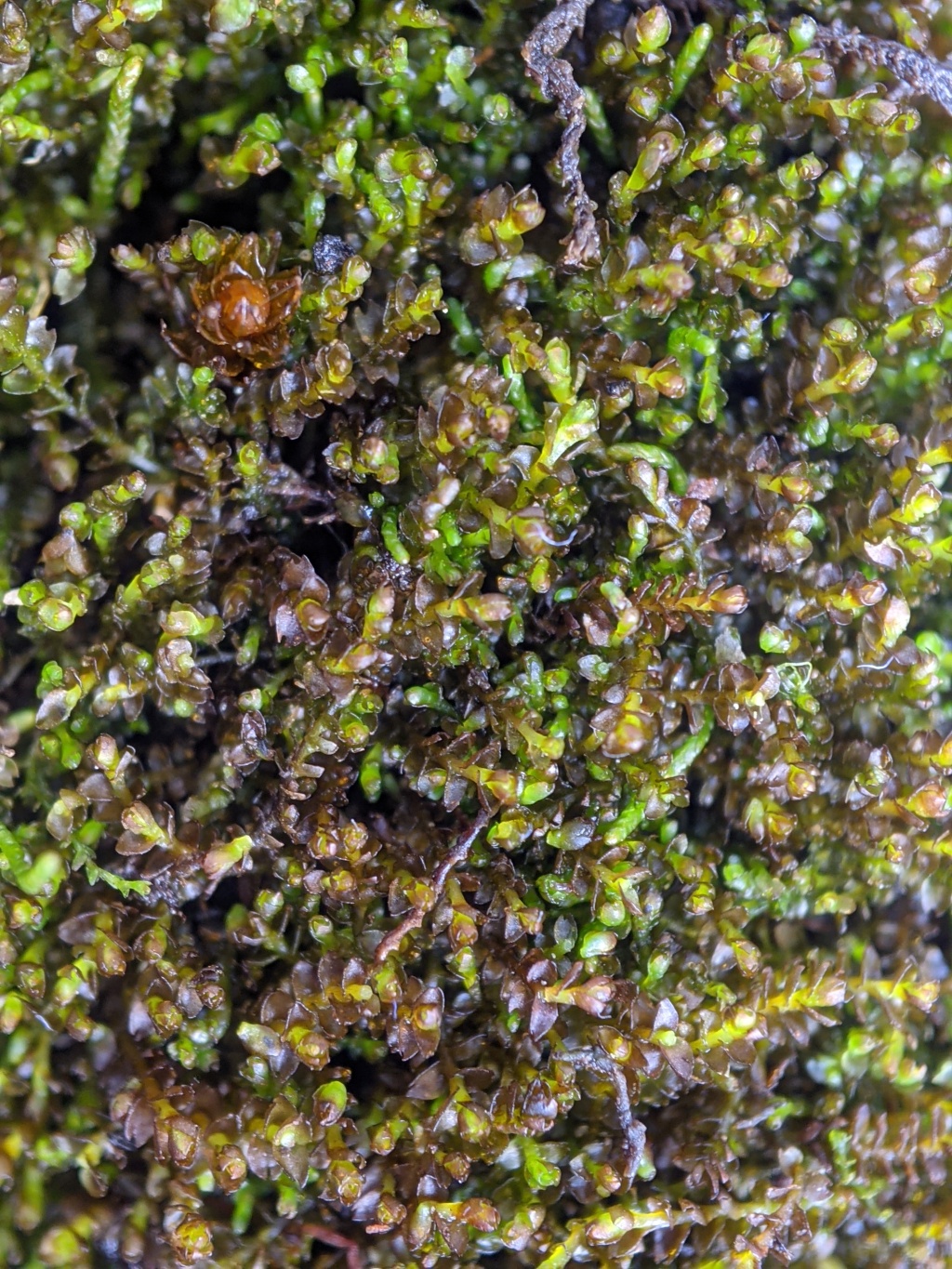Andrewsianthus
R.M.Schust.Terrestrial or lithophytic, dioicous. Specialised asexual propagules absent. Stems and branches procumbent, becoming attenuate and flagelliform with reduced leaves and either remaining on the surface or penetrating substrate (not in Victoria), with two ranks of lateral leaves and without (not in Victoria) or with vestigial to distinct (not in Victoria) underleaves; branches emerging at transition point between normal leafy and attenuated and flagelliform sections of the stem, from axils of lateral leaves or from the dorsal end of the leaf axil (not in Victoria) and with a collar of tissue at base. Lateral leaves elliptic (not in Victoria), orbicular (not in Victoria) or quadrate or ovate to oblong in outline, unlobed (not in Victoria) or bilobed, transverse to succubous (not in Victoria), patently spreading, remote, entire or rarely with occasional teeth (not in Victoria), unistratose or multistratose (not in Victoria); lobes triangular, rounded (not in Victoria) or acute, spreading or squarrose. Underleaves when present triangular to lanceolate, remote. Leaf cells cicular, oblong or polygonal, papillose and becoming striolate toward leaf base or rarely smooth (not in Victoria), thin-walled with distinct trigones, with 2–5 oil bodies; oil bodies spherical to ellipsoid, finely granular. Rhizoids scattered and mostly confined to flagelliform sections of stem. Androecia terminal on leafy axis, composed of 3–4 bracts usually with teeth at base, each with a single antheridium. Sporophyte terminal on leading leafy axis, subtended by differentiated bracts and developing within a perianth; bracts bilobed, usually dentate to laciniate; perianth ellipsoid, obloid or ovoid, plicate towards mouth, where ciliate to lobulate (not in Victoria); capsule ellipsoid, 3-stratose; elaters 2- or 3-spiral; spores minutely spinulose.
Nineteen species, with most species from Malesia, but also along the Andes to southern South America, central to Southern Africa, south-east Asia, on Subantarctic Islands, New Zealand, and eastern Australia (Schuster 2002; Söderström et al. 2016); one species, A. marionensis (S.W.Arnell) Grolle, in Victoria.
Andrewsianthus has been placed in the Lophoziaceae in the World Checklist of Liverworts (Söderström et al. 2016). However, phylogenies of DNA sequences show that this genus is misplaced in Lophoziaceae. These studies show that Andrewsianthus is potentially closely related to Chaetophyllopsis (Gradstein et al. 2014; Bakalin et al. 2024). Consequently, Andrewsianthus is placed here in the Chaetophyllopsidaceae. This placement is tentatively adopted for the need to place Andrewsianthus in a family and the lack of a better alternative. Andrewsianthus and Chaetophyllopsis differ significantly morphologically and it is likely that Chaetophyllopsidaceae is paraphyletic if Andrewsianthus is included (Bakalin et al. 2024). Relationships among genera in this group of liverworts (suborder Cephaloziinae) are mostly based on few DNA regions and are in need of confirmation. It is likely that additional families will require description to accommodate some genera in suborder Cephaloziinae, including Andrewsianthus, once phylogenetic relationships in this group are better resolved.
Bakalin, V.A., Vilnet, A.A., Klimova, K.G., Nguyen, V.S. & Choi, S.S. (2024). Gottschelia (Gottscheliaceae, Marchantiophyta) in Indochina. Plants 13 (16): 2198.
Gradstein, S.R., Laenen, B., Frahm, J.-P., Schwarz, U., Crandall-Stotler, B.J., Engel, J.J., von Konrat, M., Stotler, R.E., Shaw, B. & Shaw, A.J. (2014). On the taxonomic status of the enigmatic Phycolepidoziaceae (Marchantiophyta: Jungermanniales) with description of a new species, Phycolepidozia indica. Taxon 63: 498–508.
Schuster, R.M. (2002). Austral Hepaticae Part II. Nova Hedwigia Beiheft 119. Cramer in der Gebrüder Borntraeger Verlagsbuchbehandlung: Berling & Stuttgart.
Söderström, L., Hagborg, A., von Konrat, M., Bartholomew-Began, S., Bell, D., Briscoe, L., Brown, E., Cargill, D.C., Costa, D.P., Crandall-Stotler, B.J., Cooper, E.D., Dauphin, G., Engel, J.J., Feldberg, K., Glenny, D., Gradstein, S.R., He, X., Heinrichs, J., Hentschel, J., Ilkiu-Borges, A.L., Katagiri, T., Konstantinova, N.A., Larraín, J., Long, D.G., Nebel, M., Pócs, T., Puche, F., Reiner-Drehwald, E., Renner, M.A.M., Sass-Gyarmati, A., Schäfer-Verwimp, A., Moragues, J.S., Stotler, R.E., Sukkharak, P., Thiers, B.M., Uribe, J., Váňa, J., Villarreal, J.C., Wigginton, M., Zhang, L. & Zhu, R. (2016). World checklist of hornworts and liverworts. Phytokeys 59: 1–828.
 Spinning
Spinning